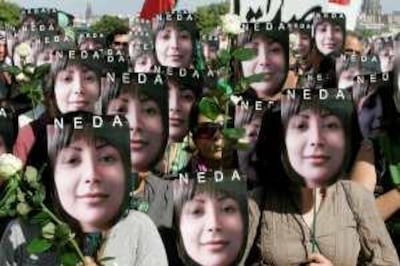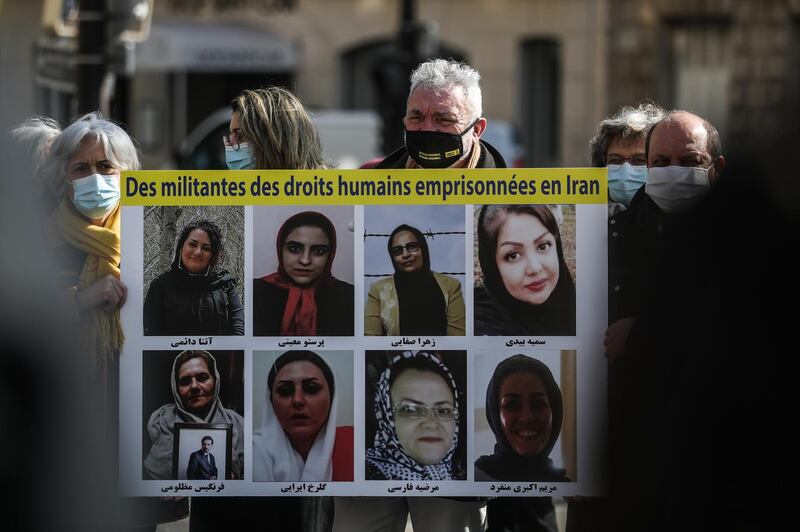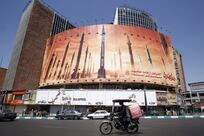Last month, the head of Iran's judiciary, Ebrahim Raisi, was declared the country's next president, marking a consolidation of hardline power in Tehran.
The Interior Ministry announced that the 60-year old cleric and close ally of the country’s Supreme Leader, Ali Khamenei, won 62 per cent of the votes. He then became the first Iranian president-elect to be blacklisted and sanctioned in the US for his role in the mass execution of political prisoners in 1988, as well as in the crackdown on 2009's so-called Green Revolution.
Mr Raisi's victory was a shock to the human rights community.
Amnesty International has documented how Mr Raisi had been part of a “death commission” that forcibly disappeared and even secretly executed thousands of political dissidents in 1988. Up to 5,000 people are thought to have been killed.
Hadi Ghaemi, the director of the Centre for Human Rights in Iran, told the New York Times: “Since the age of 20, [Mr Raisi] has been issuing execution orders and prison sentences."
Meanwhile, far from Tehran, in a townhouse on a quiet, leafy street in Washington, two Iranian sisters, with the help of friends and supporters, are working tirelessly each day to compile a list of those who died at the hand of the Iranian regime.

The sisters, Roya and Ladan Boroumand, both academics, are producing a virtual memory, called Omid, which means "hope" in Persian. It is the largest list of its kind, documenting 25,000 lives so that they were not lost in vain. Entries begin with the line “There once lived a person named…”.
For the Boroumands, the gruelling task has a profound poignancy. It is a tribute to their late father, Dr Abdorrahman Boroumand, a lawyer who was involved with the National Front pro-democracy movement.
On April 18, 1991, Dr Boroumand was stabbed to death in the hallway of his Paris apartment by Iranian agents. His assailants have never been prosecuted.
The sisters moved to the US in the 1990s after finishing their doctorates in France. They then set up a human rights database monitoring the killings. “Our most influential mentor was the revolution itself,” Roya, who was later trained at Human Rights Watch, told me.
Their list is compiled from “ordinary Iranians, including children who get caught in the Iranian Republic justice system and are executed because due process of violation is systematic,” according to Roya. It also includes victims of attacks by Hezbollah, the Iranian-backed militia in Lebanon, such as those killed in a bombing in Buenos Aires in 1994.
Their mandate and their vision is simple: they want a democratic Iran where the rule of law protects civilians. Until then, they document the lives of the dead with painstaking details, mainly drawn from open source websites or from relatives as well as victims.
Some of the entries are heartbreaking. “On this day 22 years ago, nine-year-old Karun Hajizadeh was stabbed to death with his father Hamid. Karun was the youngest of three sons” reads one entry. “Karun may have been killed because he was with his father that night or possibly because he could have identified his father’s killers. Beside Karun’s page is his school photograph.
Roya Boroumand explains that the sisters' academic and human rights training has helped them in constructing the methodology of the lists. They document biography, backgrounds, procedure but also official statements and family reactions. Their wish is that the memorial sends a potent message to the proponents of terror. But most importantly, that the victim’s life’s work will continue after their death.
This kind of documentation forces societies to face hard truths. Iran is currently one of the largest per capital executioners in the world, and capital punishment is often imposed without procedural fairness or transparency. According to the Boroumands' data, between 2000 and 2017 at least 8,276 executions took place in Iran. Less than half of them were acknowledged by the government. In 2015 alone, there were 1,045 executions.
Omid also exposes other violations, such as flogging cases, and tries to raise the visibility of human rights defenders working inside Iran who risk arrest, imprisonment and death. But most importantly, it brings back to life those who died without justice.
Why is their work a lesson for other post-conflict societies? Because acknowledging the dead and holding perpetrators to account carves a path for other post-conflict countries seeking reconciliation.
As Ladan Boroumand puts it: “Omid memorial is the outcome of a collective truth telling effort. Truth telling is the first step toward justice. It is also a crucial step that changes your status from a passive victim into an active promoter of justice and human rights, and therefore makes you an empowered agent of history.”
Naming the dead is one of the first steps in healing. Which is why Rwanda, a country that lost 1 million people in the 1994 genocide and has a substantial memorial in Kigali, is further ahead in its healing process than Bosnia, which lost 8,000 souls in Srebrenica in 1995, but still has politicians who deny the genocide.
There is no international naming convention for the crime of genocide, and yet naming is power. By calling out abuse – whether it be in Darfur or Armenia – we call out the perpetrators. If the Omid model was used in on-going conflicts such as Syria, Yemen, Afghanistan, Iraq and Ethiopia, it could have tremendous potential for healing. The victims are seen more as individuals who had a life – but one which was taken from them violently, and without recourse.





